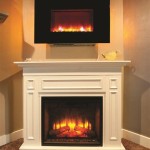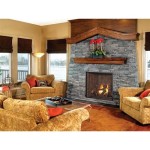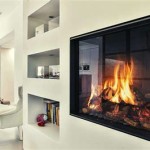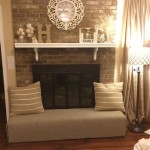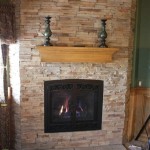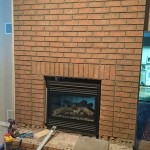What Is A Gas Fireplace Thermocouple?
A gas fireplace thermocouple is a safety device that plays a critical role in ensuring the safe and efficient operation of a gas fireplace. Its primary function is to detect the presence of a pilot light flame and to allow the main gas valve to open only when the pilot light is lit. Without a functioning thermocouple, the gas valve would remain closed, preventing the fireplace from operating. Conversely, if the thermocouple fails in a way that improperly signals the presence of a flame, it could lead to a dangerous build-up of unburnt gas.
The thermocouple is a relatively simple device, but its principles of operation are rooted in fundamental physics. It consists of two dissimilar metal wires joined at one end, forming what is known as the "hot junction." This junction is positioned directly in the pilot light flame. The other ends of the wires, the "cold junction," are connected to the gas valve via electrical wiring. When the hot junction is heated by the pilot light flame, a small voltage is generated due to the Seebeck effect. This voltage, typically in the millivolt range, is sufficient to hold the gas valve open, allowing gas to flow and maintain the main flame of the fireplace.
If the pilot light flame is extinguished, the hot junction cools, and the voltage drops. When the voltage falls below a certain threshold, the gas valve closes automatically, shutting off the gas supply. This safety mechanism prevents unburnt gas from accumulating inside the fireplace and potentially causing an explosion or carbon monoxide poisoning. The thermocouple, therefore, is an essential safety feature that is incorporated into the majority of gas fireplace designs. Its reliability and proper functioning are paramount to the safe operation of the appliance.
The Seebeck Effect and Thermocouple Operation
The operation of a thermocouple hinges on the Seebeck effect, a thermoelectric phenomenon discovered by Thomas Johann Seebeck in the early 19th century. The Seebeck effect describes the generation of a voltage (electromotive force) in a circuit composed of two dissimilar metals when there is a temperature difference between the junctions of these metals. In the context of a gas fireplace thermocouple, the two dissimilar metals are typically alloys chosen for their specific thermoelectric properties and ability to withstand high temperatures. Common materials include copper-nickel alloys and iron-constantan alloys.
When the hot junction of the thermocouple is heated by the pilot light flame, electrons in the hotter metal gain more kinetic energy and diffuse towards the colder metal. This diffusion of electrons creates a charge imbalance, resulting in a voltage difference between the two junctions. The magnitude of the voltage produced is directly proportional to the temperature difference between the hot and cold junctions. A higher temperature difference results in a larger voltage, and vice versa. This voltage is then used to power the electromagnetic mechanism within the gas valve.
The gas valve, in this case, is designed to remain open only when it receives the correct voltage from the thermocouple. The voltage energizes a small electromagnet that holds the valve open against the force of a spring. When the pilot light goes out, the temperature of the hot junction decreases, and the voltage drops. The electromagnet weakens, and the spring pushes the valve closed, cutting off the gas supply. This ensures that gas cannot flow unless a flame is present to ignite it.
Identifying a Faulty Thermocouple
A malfunctioning thermocouple is a common cause of problems with gas fireplaces. Identifying a faulty thermocouple is crucial for troubleshooting fireplace issues and ensuring its safe operation. Several symptoms may indicate a failing thermocouple. One of the most common signs is the inability to keep the pilot light lit. If the pilot light ignites briefly but goes out as soon as the pilot control knob is released, it suggests that the thermocouple is not generating sufficient voltage to hold the gas valve open.
Another symptom of a faulty thermocouple is inconsistent pilot light operation. The pilot light may stay lit for a while but then extinguish spontaneously. This could be due to intermittent variations in the thermocouple's voltage output, possibly caused by corrosion, loose connections, or internal damage. A visual inspection of the thermocouple can sometimes reveal signs of damage, such as corrosion on the metal tip or damaged insulation on the wires. However, a visual inspection is not always conclusive, as the damage may be internal and not easily visible.
To accurately diagnose a faulty thermocouple, a multimeter is used to measure the millivolt output. The multimeter is connected to the terminals of the thermocouple at the gas valve. With the pilot light lit, the multimeter should display a voltage within the specified range for the fireplace model, typically between 20 and 30 millivolts. A significantly lower voltage reading indicates a faulty thermocouple that needs to be replaced. It is also important to check the continuity of the thermocouple wiring to ensure that there are no breaks or shorts in the circuit. If the continuity test fails, the thermocouple is likely damaged and needs replacing.
Troubleshooting and Replacement Procedures
Before replacing a thermocouple, it's essential to rule out other potential causes of pilot light problems. A dirty or clogged pilot light orifice can also prevent the pilot light from staying lit. Dust, debris, and spiderwebs can accumulate in the orifice, restricting the gas flow and causing the flame to be weak or unstable. Cleaning the orifice with a small wire or compressed air may resolve the issue. Another potential problem is a faulty gas valve. If the gas valve is not functioning correctly, it may not open fully, preventing the pilot light from receiving sufficient gas.
If the troubleshooting steps do not resolve the issue, replacing the thermocouple becomes necessary. The replacement process involves several steps that should be performed carefully and safely. First, the gas supply to the fireplace must be completely shut off. This is typically done by turning the gas valve to the "off" position. Next, the pilot light assembly needs to be accessed, which may involve removing the fireplace's front panel or other components. It's crucial to consult the fireplace's owner's manual for specific instructions on how to access the pilot light assembly.
Once the pilot light assembly is accessible, the old thermocouple can be disconnected from the gas valve. The connection is typically made with a threaded fitting. After disconnecting the old thermocouple, the new thermocouple can be installed in its place. It's important to ensure that the connection is secure and tight to prevent gas leaks. The hot junction of the new thermocouple should be positioned directly in the path of the pilot light flame. Once the new thermocouple is installed, the gas supply can be turned back on, and the pilot light can be relit. It's important to check for gas leaks using a soap solution before operating the fireplace.
When selecting a replacement thermocouple, it is crucial to choose a compatible model that is specifically designed for the gas fireplace. Thermocouples come in various lengths and with different types of connectors. Using an incompatible thermocouple can lead to improper operation or even safety hazards. The fireplace's owner's manual or the manufacturer's website should provide information on the correct thermocouple model for the fireplace. It is also crucial to purchase a thermocouple from a reputable supplier to ensure its quality and reliability. Cheap or low-quality thermocouples may not perform as intended and could fail prematurely.
Safety precautions should always be taken when working with gas appliances. If you are not comfortable performing the replacement yourself, it is best to hire a qualified gas fireplace technician to do the job. A qualified technician has the necessary training and experience to safely and correctly replace the thermocouple. They can also diagnose any other potential problems with the fireplace and ensure that it is operating safely and efficiently.

The Basic Understanding Of A Gas Fireplace Millivolt System

Thermo Thermopiles Friendly Fires

Thermo Everything You Need To Know And Then Some

Gas Fireplace Pilot Lights Your Complete Guide Universe

Gas Fireplace Pilot Assembly With Thermocouple For Kitchen And Patio Made In China Com

Thermo Thermopiles Friendly Fires

Knowledgebase Ventless Gas Logs Fireplaces Inserts Stoves And Accessories By Com Specializing In

Gas Fireplace Won T Stay Lit Magic Touch Mechanical

Thermopile Thermocouple Pilot Generator Gas Fireplace Heater Temperature Sensor

Standing Pilot Troubleshooting Stoveinfo Com

